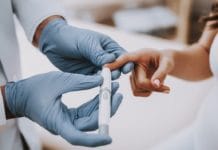Appreciation is contagious, spreading like wildfire to those who catch a glimpse of its awesome beauty, inhaling the fragrant bouquet of proliferating positivity, and witnessing the residual effects in action. The importance of freely giving appreciation cannot be stressed enough, and the final part of this series focuses on this phenomenon as it appears in the dental workplace.
To read part one of the Appreciation in the Dental Workplace series, click here. To read part two, click here.
What is appreciation? How is it different than recognition? Both are good questions to ask, so let’s start there. Then, we will discuss why it is a good idea to identify our most and least valued languages of appreciation, as well as why we should recognize there are generational differences to consider. Finally, I will leave you all with valuable tests you can each use and share with your dental team.
Recognition versus Appreciation: The Real Difference
Did you know that research has found that when employees believe they will be recognized for their hard work, they are 2.7 times more likely to be highly engaged?1 Wowzers! We should discover why this is true and how to implement it in our dental practices, particularly as leaders, managers, or mentors.
First, let’s examine the difference between recognition and appreciation. Getting a clearer perspective on this will aid our quest for a happier dental workplace.
While recognition programs (plaques, gift cards, certificates, etc.) center more on the length of service to a company or reaching some other type of milestone, appreciation is more directed toward individuals and addresses achievements as well as personalizes attention from one person to another. Examples of appreciation include words of gratitude, focused time and attention, and a specific, meaningful gift.
The four limitations to the recognition approach are:
- Focuses primarily on performance or achievement of certain goals
-
- What the person does
- High-performing employees can make major mistakes, too
- Not all employees are high achievers, yet all employees need appreciation
-
- Misses half the team
-
- Recognition-based rewards only address about 45% of employees, whose primary language of appreciation is words of affirmation, and only 6% of those whose primary language is tangible gifts (incentive-based programs)2
- This still leaves approximately half of the team not feeling appreciated since they fall into the other three categories: acts of service, physical touch, and quality time
-
- Not perceived as genuine
-
- No effort, impersonal, not authentic
-
- High financial cost
-
- Tangible gifts cost large organizations a lot of money
- Tangible gifts are considered the least valued language of appreciation by employees, so this approach may be wasteful
-
Some reasons why the appreciation approach is more effective include:3
- Focuses on the value of the individual employee
-
- Who the person is
- Employee will still feel appreciated, as they should, even if they make a mistake
-
- Every person is appreciated
-
- Not reward-based or generalized
- No one is forgotten or swept under the proverbial rug
-
- Feels more personal and honest
-
- Effort made, genuinely perceived
-
- Money is not wasted
-
- Any sized business can use this approach, with individualized attention to employees or peers
- Only employee-specific gifts are considered
-
We now see how recognition and appreciation are vastly different. Therefore, it stands to reason that identifying the most and least valued languages of appreciation discussed below can contribute to feeling respected in the dental workplace.
Leaders, take note. This is where you will need to pay the most attention. Gaining insight into what categories your team members fall into and then learning how to speak each individual’s language effectively will be a sure way to create an atmosphere of positivity and responsiveness that just might create a dental team with long-term staff. Here’s hoping!
The Least Valued Language: The Great Void
There is a caveat to not doing a full investigation into where each of the five languages ranks, both for our own sake and for that of the team members we work with in the dental setting.
What if you’re trying with all your might to speak words of affirmation to a team member, and day after day, they do not respond favorably? What if you give them very special gifts, only to have them stare blankly at you and then toss that thoughtful token in the garbage as soon as you turn your back? Let’s not even consider how you’d feel if you stayed late on a Friday evening to help a co-worker complete sterilization, restock operatories, and empty the recycle bin ‒ just to be nice ‒ and there’s no “thank you” afterward. How would that make you feel?
Acts of kindness may be exactly what you would like to receive. The reason deeds of giving are not appreciated wholeheartedly is possibly due to you speaking your language. Not theirs. As much as we all have a top one or two languages, it’s often the opposite of what another person receives.
We all have one or two least valued languages, so we cannot expect another person to acknowledge the act or appreciate the gift in the same manner we would. Make sense? I think you are all beginning to understand this theory much more now, and that is great news indeed.
Overcoming the Challenge of Generational Differences
Today’s work culture is so much different than it used to be. That being said, there is no right way or wrong way; there are just differences. Respecting one another can go a long way to everyone playing nice in the sandbox. I often use the term, respect, because I strongly believe in it.
How often have you heard or even vocalized an assumption about someone’s work ethic due to their age or experience? Older or more experienced hygienists may assume newer grads or younger team members do not do things the right way, are lazy, and are too sensitive. Conversely, many younger or newer hygienists think older hygienists are contrite, refuse to learn new tricks, and are unaccepting of new grads.
We need to do better. We need to be open-minded and open-hearted and learn new ways of encouraging and empowering others. How much more effective and cohesive would our practices be if everyone was respectful and embraced experience and new modalities with equal vigor?
If we put this into practice by learning what makes one another tick and not simply put certain groups in a box, wouldn’t that be wonderful? We don’t all value the same things, though there are tendencies within generational groups, of course. Let’s be open to one another and learn about and from each other.
What have we got to lose? Let’s take the tests as a team (see the links below). Let’s share and discuss our results with one another and see where that leads. It could be fun! If anything, we at least would gain valuable insights that we never before would have thought of, right?
The MBA (Motivating by Appreciation) Inventory test: See what language of appreciation you most and least rank in general workplace settings. You will need to purchase a code or book to take the test, but it is well worth it.
Dentistry Workplace Version: This is the same as the MBA Inventory test, but specifically for dental professionals. Fun! Maybe take this one at a team-building event.
In Closing
Remember Dr. Clark from part one of this series? He was losing his cool, and he was so upset about team attrition and losing too many team members. I believe if we all learned a little about this phenomenon of appreciation languages, he would be quite proud indeed. Don’t you?
Thank you for reading this series. It has been eye-opening for me and a pleasure to relate to you all, my friends and colleagues. Nelson Mandela said, “If you talk to a man in a language he understands, that goes to his head. If you talk to him in his own language, that goes to his heart.”
To read part one of the Appreciation in the Dental Workplace series, click here. To read part two, click here.
Before you leave, check out the Today’s RDH self-study CE courses. All courses are peer-reviewed and non-sponsored to focus solely on high-quality education. Click here now.
Listen to the Today’s RDH Dental Hygiene Podcast Below:
References
- Wickham, N. (2023, July 6). The Importance of Employee Recognition: Statistics and Research. Quantum Workplace. https://www.quantumworkplace.com/future-of-work/importance-of-employee-recognition
- White, P. How do Employees Want to Be Shown Appreciation? Results from 100,000 Employees. Strategic H.R. Review. 2017; 16(4): 197-199. https://www.emerald.com/insight/content/doi/10.1108/SHR-06-2017-0037/full/html
- White, P. (2017). The Vibrant Workplace: Overcoming the Obstacles to Building a Culture of Appreciation. Northfield Publishing.












